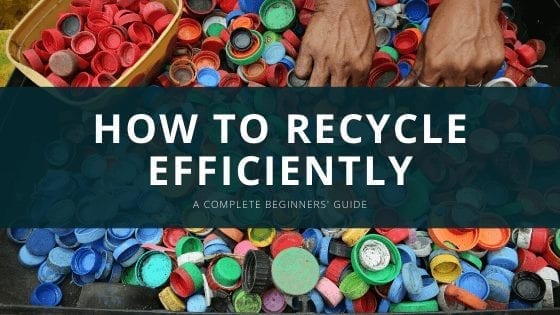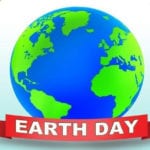Recycling is the last R of the Zero Waste Management System. While most zero waste experts say that to recycle is the last resort, you still need to do it. And not just recycle – you need to recycle efficiently.
The Zero Waste Lifestyle System has discussed in one of its earliest articles about how recycling hides very grim situations, including improper and futile recycling systems. Recycling incorrectly is worse than not recycling at all. You devalue whatever recyclable material you have if you cannot sort it out properly.
About 25% of what people recycle can’t actually be recycled. These non-recyclables simply contaminate the recycling stream and even make recycling the right materials harder than it should be.

But why has this happened? The simple answer is the blue bin itself. When we put all our recyclables into one bin, we risk throwing trash more in with the useful materials.
One alternative way of recycling has proven very effective is the holistic recycling approach. Here people themselves sort their recyclables before sending them to a recycling facility. Recyclables are separated based on category and put in their own containers. This is particularly seen in Japan where they even have a recycling chart for residents to follow strictly.
In fact, the village of Kamikatsu in Japan has achieved a Zero Waste community where everything gets recycled.
To help guide you on how to recycle efficiently, I asked recycling experts from TerraCycle and Tacuna Systems on recycling rules and tips. Learn how to manage your waste better with their insights.
1. What can be recycled?
What is accepted in municipal, single-stream recycling programs varies from region to region (even town to town!). Very few items are accepted through these recycling programs, namely paper, glass, aluminum, metals and thermoplastics. Aluminum, for example, is endlessly recyclable with strong demand all over the world. Overall, much of what we try to recycle through standard programs nowadays gets tossed in the trash anyway.
Paper
All paper and cardboard, except ‘absorbable’ paper (eg. tissues, serviettes, paper towel) and waxed paper (eg. baking paper, coffee cups, paper ice-cream containers) can be recycled.
But if the paper is soiled or wet, compost it.
Glass
Glass jars and bottles of all colours (with lids removed) can be recycled.
Metals
All metal containers and household items can be recycled.
These include the following:
- Aluminium drink cans
- Tinned food cans
- Jar lids from glass jars
- Foil trays
- Empty aluminium and steel aerosol cans with plastic buttons removed.
- Bottle tops and lids
- Foil (including easter egg wrappers)
Plastics
All rigid plastics, including #1-7 (with lids removed from bottles/containers) can be recycled.
Terracycle Recycling
TerraCycle aims to eliminate the idea of waste through recycling everything. According to Shaye DiPasquale, they partner with brands around the world to create free recycling programs that allow individuals and communities to collect and recycle traditionally hard-to-recycle waste.
Public recycling is economically motivated, so most common items don’t belong in your blue bin. However, TerraCycle® proves that everything is technically recyclable, including candy and snack wrappers, plastic packaging, shoes, razor blades, and old and broken toys.
2. What can’t be recycled?
According to Joe Flanagan of Tacuna Systems, things that can’t be recycled include foam (polystyrene), medical waste, and composites.
Small items
Small items, which most single-use plastic are, are hard to recycle. These include flexible packaging like chip bags and juice or soup pouches and cups with plastic or waxed coatings.
Black Plastic
Black plastic cannot be identified by automatic sorting machines and therefore is not currently recycled.
Medical waste
Waste from medical facilities cannot be sent to a recycling facility. These include medical equipment, medicines, and waste matter such as human and animal poop. Yes, that means that you can’t throw diapers or pet waste on the blue bin.
They are hazardous due to contact with various germs and viruses. Dispose of them through your local hospitals or health offices.
Composites
These are complex items that contain multiple materials, such as things in plastic wrap, plastic wrap, bubble wrap, plastic sandwich bags, freezer bags and Pringles tubes. The same goes for polystyrene foam and plastic “to-go” containers and cups.
Other unrecyclable materials are garden hose, rope, leashes, wire, and string.
3. What should one do before throwing recyclables in the blue bin?
Don’t be a “wish-cycler”!
Research. Go to your municipality’s website or call or email them to learn more about what exactly is recyclable curbside in your area.
To find out what type of plastic a container is made of, look for the
Resin Identification Code (RIC) at the bottom: a triangle made of arrows
containing numbers 1 through 7. These are NOT “recycling numbers,” of which there are no such thing, and they do not equal recyclability.
Many municipal recyclers accept #1 or #2 white or clear bottles or jars (with
caps, pumps, and spouts removed), aluminum containers, and clear glass with no attachments or added plastic. Again, this varies by region, so please
check with your municipality for what is accepted. Colored plastic and
small and complex items are generally non-recyclable.
Clean containers.
For containers, try to get as much of the containers’ contents before
putting them in the blue bin.
Sort out your trash well.
Using the recyclables and non-recyclables guide we outlined above, separate your waste carefully. While cumbersome and labor-intensive, it is essential in your journey to living sustainably that you separate different types of waste so they can be recycled efficiently. Send each type of recyclable to the recycling facilities that accept them.
Conclusion
To recycle efficiently, you need to learn what’s recyclable and non-recyclable. Separate them from each other strictly. The best way to recycle is to understand the recycling systems available to you. Then send your sorted recyclables to the proper facilities, including Terracycle.
Aside from learning how to recycle, you also need to hold countries accountable for recycling their own products. This is what makes the holistic recycling process in Japan so successful. Companies there, especially appliance manufacturers, implement Post-Industrial Plastic Recycling.
The most important attitude towards living with waste is mindfulness. Ask yourself many times before buying something is if it’s really helpful or necessary. Then think of where it will go after you use it. Can you reuse for other purposes? Can you leave it to rot and be consumed by earth safely? Can you recycle it? If not, don’t bother buying it.





One Comment
Leave a ReplyOne Ping
Pingback:Go Beyond The 3 Rs: Practice The 5 Rs Of Zero Waste